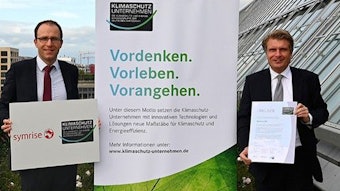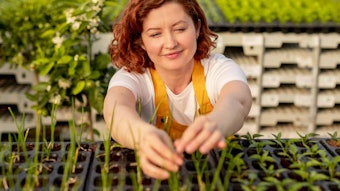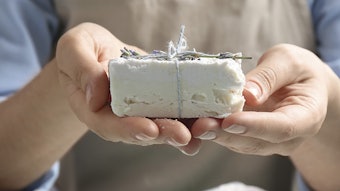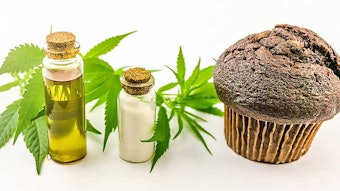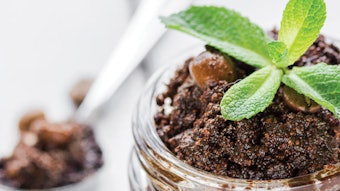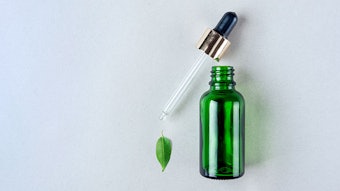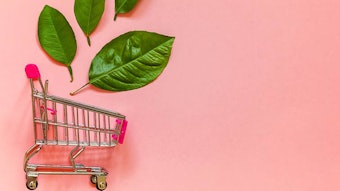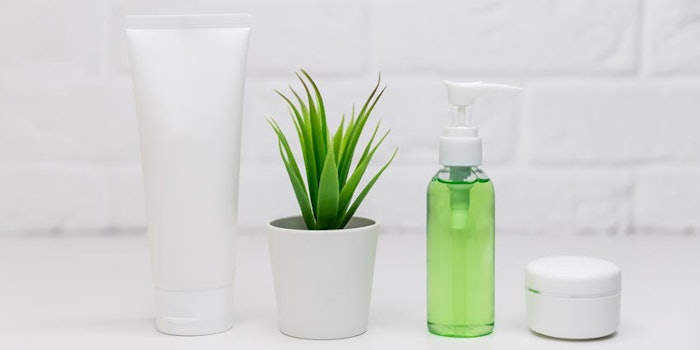
As most formulators are (hopefully) aware, creating a product with three, four or more botanical additives means a final formula contains more than 200 different chemicals.
Consider a product containing the common natural Aloe (vera) barbadensis leaf juice. If it were labeled according to the different chemicals identified in the juice, the ingredient listing for just this ingredient would be:
Aloe Barbadensis Leaf Juice*: Water, Acetylated Glucomannan, Acetylated Mannan, Aldopentose, Aloe-emodin, Aloetic Acid, Alkaline Phosphatase, Alanine, Aloin, Amylase, Anthranol, Antracin, Antranol, Arachidonic Acid, Arabinogalactan, Arginine, Asparagine, Aspartic Acid, Auxins, Barbaloin, Basitosterol, Bradykinase, Campestrol, Carboxylase, Carboxypeptidase, Catalase, Cellulase, Cholesterol, Choline, Chrysophanic Acid, Cinnamic Acid Esters, Cinnamonic Acid Ester, Cyclooxidase, Cyclooxygenase, Cysteine, Emodin, Ethereal Oil, Folic Acid, Galactan, Galactogalacturan, Galactoglucoarabinomannan, Gibberillin, Glucogalactomannan, Glucose, 8-C-Glusoly-(2'-O-cinnamoly)-7-O-methlyaloediol, 8-C-Glucosyl-(S)-aloesol, 8-C-Glucosyl-7-O-methylaloediol, 8-C-Glucosyl-noreugenin, 8-C-Glucosyl-7-0-methylaloediol, Glutamine, Glutamic Acid, Glycine, Histidine, Isoaloeresin D, Isobarbaloin, Isoleucine, Isorabaichromone, Kolin, Lectins, Leucine, Lignins, Linolenic Acid, Lipase, Lupeol, Lysine, Mannan, Mannose, Methionine, Neoalosin A, Pectic Substances, Peroxidase, Phenylalanine, Phosphoenolpyruvate, Potassium Sorbate, Proline, Resistannol, Rhamnose, Salicylic Acid, Salts of Calcium, Chromium, Copper, Iron, Magnesium, Manganese, Potassium, Sodium and Zinc, Saponins, Serin, Sitosterol, Superoxide Dismutase, Threonine, Triglycerides, Triterpenoid, Tyrosine, Uric Acid, Valin, Vitamin A (Beta-Carotene), Vitamin B1 (Thiamine), Vitamin B2 (Riboflavin), Vitamin B3 (Niacin), Vitamin B5, Vitamin B6, Vitamin 12, Vitamin C, Vitamin E and Xylan.
*The leaf juice contains 98% water. All of these individual chemicals are present at concentrations less than 1% and therefore are not required to be listed in decreasing concentration; they are listed here in alphabetical order.
See related: Aloe; Activity, Consistency, Authenticity and More—A Review
The aloe vera plant and its component parts have been used since antiquity for a wide variety of medical purposes. In more modern times, the juice of the plant has been claimed to be useful for immunostimulation; anti-inflammatory effects; wound healing; promotion of radiation damage repair; antibacterial, antiviral, antifungal, anti-diabetes and anti-neoplastic activities; stimulation of hematopoiesis; antioxidant effects; etc. This has led to scientists more thoroughly study the chemicals present in the juice.1-4 While other botanical additives used in cosmetics have been less well-analyzed, it would not be surprising to find they also contain a wide variety of chemicals.
What’s in a Name
Botanical ingredients are typically used in cosmetics based on the identification of beneficial effects dependent on only one or two active chemicals present in the botanical. However, rather than just add the active chemicals, many companies add the botanical. While it may look better than chemical names on the ingredient label, and it may fit with the natural ingredient trend, applying so many other chemicals to skin does not fit with one of the tenets of the clean beauty movement; i.e., apply only what is needed.
In August 2020, the Israeli Ministry of Health (MoH) adopted the ISO 16128-2:2017 guidelines for naturals and organics as they refer to cosmetic ingredients and products,5 which was in line with actions taken by many countries around the world. This has special significance in Israel because until then, natural claims could not be made on cosmetic labels. Companies importing cosmetics from outside the country had to cover these claims if they appeared on the labels. It was the MoH position that without a definition for natural or organic, products should not make claims for it.
As a cosmetic scientist working in Israel, this author certainly supports this decision by the MoH. However, as a chemist it also raises some concerns. Having the claims natural and organic officially sanctioned by the MoH furthers the consumer belief that there is something special about these ingredients—i.e., that they are not chemicals, they are natural; or they are not synthetic, but organic. This leads to the belief that they are purer, safer, better than chemical or synthetic ingredients. No wonder consumers prefer to see botanical names as ingredients rather than unfamiliar chemical names.
While a botanical may look better than chemical names on the ingredient label, applying so many other chemicals [contained therein] to skin does not fit with one of the tenets of the clean beauty movement; i.e., apply only what is needed.
This difference may be brought into even sharper focus by reports such as two new class action lawsuits based on natural claims for a shampoo and lip balms that purportedly contain synthetic ingredients. If this continues to be a source of litigation, it will further fix in consumers' minds that there is a basic and important difference between natural and synthetic ingredients.
Complications of Naturals
This author personally objects to encouraging the belief that natural ingredients are different from chemical ingredients. In fact, the trend to use more natural ingredients, especially botanicals, actually increases the number of chemicals applied to consumers' skin. This increase is occurring at a much faster rate than most people are aware. It is not unusual now for cosmetic products, especially treatment creams, to be formulated with four, five or more botanical ingredients. Each botanical additive appears on the product label as a single ingredient, yet these botanicals are composed of many different chemicals.
While it makes perfect sense to list these ingredients under their botanical name, which is recognizable to many consumers, in this author’s view, there also should be some indication of what is in these botanical additives. It also makes sense for the formulators using these additives to be aware of the chemicals contained in them. In a report published in 2020, researchers questioned the use of ingredients that contained food allergens in cosmetics intended for children, noting most of these were found in cosmetics claiming natural ingredients. In fact, the authors thought these products should carry a warning label.6
Most of the chemicals listed above are present at very low concentrations but again, this represents the chemicals in just one botanical ingredient. Imagine what the list would be for a product containing four or more botanicals. On the positive note, however, it demonstrates the remarkable properties of the stratum corneum: it can prevent or limit the penetration of an extremely diverse range of chemicals, many of which have never been applied to the skin before. And it does this for chemicals that are applied to the same skin area one or more times per day for weeks or months. These application conditions would be those considered most likely to cause irritation or sensitization reactions.
See related: Why We Should Shorten Cosmetic Ingredient Labeling
Conclusions
There can be no doubt that Aloe barabadensis leaf juice is a natural cosmetic ingredient but it certainly contains a great many chemicals—in fact, many more chemicals than you would find in a cosmetic product made completely with chemical ingredients. That certainly does not make it safer, purer, etc. While chemists understand this, this author is not so sure that consumers do.
It is not the objective of this commentary to suggest botanical additives may not be safe—this author has always been opposed to advertising products based on the ingredients they do not contain. By making the claim natural seem special, however, we are suggesting that chemical ingredients are less safe or less pure, when they are not.
In an earlier commentary,7 this author questioned whether the industry needs to use so many ingredients when formulating cosmetic products. The question here is: “Do you really know how many chemicals are in your products?”
